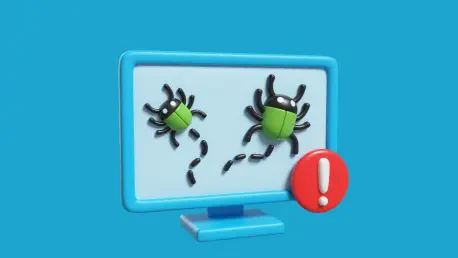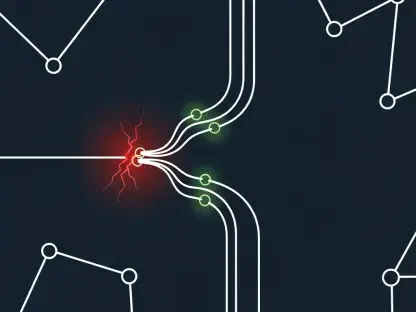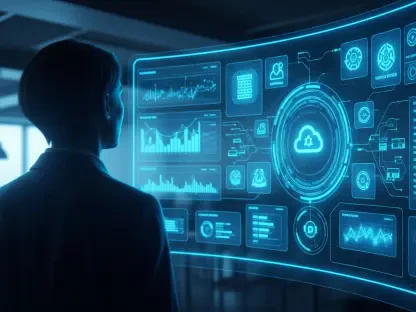In 2025, ongoing challenges in cybersecurity are spotlighted by a critical issue Microsoft has disclosed—a memory corruption vulnerability in its Scripting Engine, CVE-2025-30397. In today’s digital landscape, securing Windows systems represents a dynamic yet critical task, underscored by the unique nature of this security flaw. As cyber threats evolve, vulnerabilities like this create profound risks that challenge the infrastructure and integrity of millions of systems worldwide, prompting urgency across industries reliant on these technology platforms.
Overview of the Memory Flaw and Its Impact
The disclosed vulnerability, CVE-2025-30397, poses a significant threat characterized as type confusion, allowing malicious actors to execute remote code. This type confusion permits code alteration when targeted users interact with crafted URLs. Specifically, it impacts users of Microsoft Edge and Internet Explorer Mode, two integral components of Windows operating systems, thereby jeopardizing system integrity, confidentiality, and availability. This incident highlights the vulnerability of these widely-used systems, necessitating immediate action to protect end-users from potential exploits.
Affected entities span a broad spectrum—from individual users to corporate infrastructures—given the widespread deployment of Windows environments. These systems, already a target for cybercriminals due to their ubiquity, face heightened risk with this flaw. As users rely on legacy modes like Internet Explorer for backward compatibility, it becomes imperative to acknowledge the potential threats these configurations now face and address them promptly with strategic security measures.
Criticality and Exploitability of CVE-2025-30397
Severity and Exploitation in the Wild
The severity of CVE-2025-30397 distinguishes it sharply among the 72 vulnerabilities revealed in May’s Patch Tuesday updates, including five critical zero-day threats. Reports of exploitation underscore the vulnerability’s critical nature, illustrating active threat actors targeting systems. Successful exploitation can lead to compromised devices, where attackers gain unauthorized access to sensitive information and system controls, disrupting both personal users and organizational operations alike.
Mechanism of Exploitation
The mechanism of exploitation primarily involves persuading users to engage with malicious links designed to exploit the system’s legacy components. Integral to this is the MSHTML platform, still present in Windows systems, which cybercriminals exploit to inject harmful code. The persistence of legacy software components in modern systems reveals fragility, opening pathways for malicious actions that exploit these outdated functionalities, contravening traditional security protocols.
Challenges in Addressing Legacy Software Vulnerabilities
Modern cybersecurity mandates necessitate securing systems that operate in part on legacy components—an endeavor fraught with difficulty. Aligning advanced environments with older software creates complexities in maintaining protective measures. Educating users about inherent risks and solidifying patch management protocols remain vital yet challenging aspects of safeguarding against vulnerabilities like CVE-2025-30397.
Addressing these challenges requires a blend of technological advancement and procedural vigilance. Improving user awareness, adopting proactive measures, and instituting robust system configurations contribute to mitigating legacy vulnerabilities. Embracing innovative solutions to maintain security even with older components becomes crucial as the digital ecosystem evolves.
Microsoft’s Response and Security Recommendations
Microsoft has stressed the importance of applying security patches swiftly to counterbalance the effects incurred by CVE-2025-30397. The guidance emphasizes reviewing browser settings and potentially disabling Internet Explorer Mode to thwart exploit attempts. These tactical recommendations aim to fortify system defenses and minimize exposure to targeted attacks, preserving operational integrity and user confidence.
Prompt patch implementation plays a decisive role in maintaining system security. Aligned with Microsoft’s recommendations, users must adopt timely updates—not merely for issue resolution but as an ongoing commitment to safeguarding technological environments. The importance of agile security response is reflected in the urgency of these recommendations.
Future Implications and Industry Lessons
This incident serves as a pivotal reminder of the challenges in managing software security alongside legacy system components. It accentuates the ongoing importance of cybersecurity hygiene and proactive threat management, vital aspects in the contemporary, ever-changing digital landscape. Industry players are urged to innovate and pursue compliance to stay ahead in mitigating threats that today’s interconnected systems face.
Entities within the cybersecurity sector must align themselves with forward-thinking strategies and technological advances. Lessons learned from vulnerabilities should inspire shifts toward compliance and innovation, fostering an environment resistant to evolving threats. This proactive stance nurtures the development of solutions to meet future security challenges.
Conclusion and Recommendations for Stakeholders
The CVE-2025-30397 vulnerability is a stark reminder of the importance of swiftly addressing security flaws and adopting comprehensive protective strategies. Industry stakeholders, including system administrators and IT professionals, are encouraged to focus on advanced security investments and effective management of legacy system vulnerabilities. Seeking out technological advancements and continuously reinforcing security measures will prepare organizations for the digital challenges that lie ahead, making them resilient against exploits and harmonizing legacy components with modern-day protective forces.









